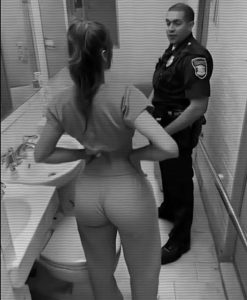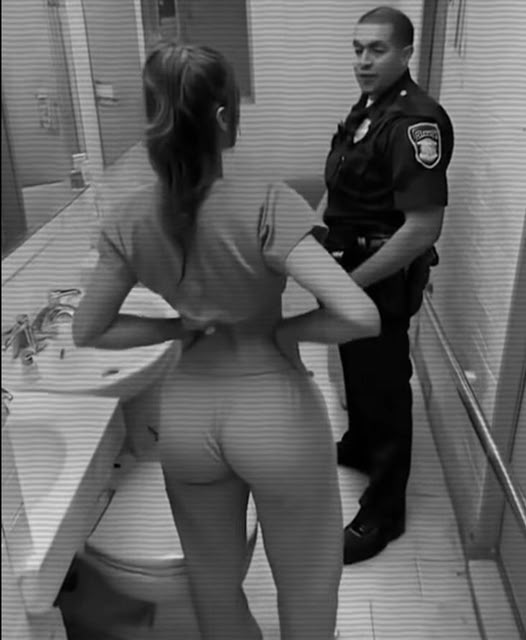Prisons are meant to be very rigorous places where rules are constantly observed, there is always someone watching, and everyone has their own space. These places are designed to keep people away from the outside world while helping them get healthier by keeping a careful eye on them. But in the last few years, the walls of correctional authority have started to break down. One of the hardest and most controversial challenges is the growing number of inappropriate, romantic, or sexual relationships between inmates and staff.
A lot of people think these are just interesting headlines or big scandals, but the truth is that they are much more complicated, human, and systemic than most people imagine.
These aren’t only difficulties that people have; they often suggest that institutions have bigger problems, that people are emotionally weak, and that people are being manipulated psychologically when they are under a lot of stress and are supposed to keep their emotions in check but don’t always have the tools or support to do so.
For instance, there was a recent case in California. When it became known that a 28-year-old female correctional officer at a high-security prison had been dating a gang member who was serving a long sentence, she was arrested and charged. The CCTV cameras proved that she had gone into his unit at strange times many times. They uncovered unlawful things in her personal belongings, like a smuggled phone that she used to talk to the inmate while she wasn’t working. She cried in court and stated that the inmate helped her “feel seen” when she was “emotionally isolated.” Her story was disturbing, but I had heard it before.

This has happened before, not just this time. More and more correctional departments in the U.S. are seeing staff-inmate partnerships, notably between female officers and male inmates. These relationships can be anything from consensual (but still unlawful) romances to big criminal plots that include drug smuggling, bribery, assisting someone escape, and sexual misconduct.
One of the most famous occurrences was in 2015 in upstate New York, when two inmates escaped from the Clinton Correctional Facility with the help of a female prison worker named Joyce Mitchell. She admitted to sneaking in tools and having intimate relationships with both criminals. The escape led to a huge manhunt that eventually led to Mitchell’s own arrest. Escape at Dannemora, a short series on Showtime, was based on the case since it attracted so much attention. The true numbers indicate what correctional experts have been saying for years: jails aren’t just about keeping people in line; they’re also about making connections, gaining power, and seeing how weak people are.
The question isn’t only “how does this happen?” but “why does it happen so often?”
To understand that, one must first look at the jail environment from a psychological point of view. Both staff and convicts think that jails are hard on their emotions. Officers, especially women who serve in male-dominated areas, may feel lonely and mentally drained on the job. The shifts go on for a long time. There aren’t many breaks. It’s not common to get emotional assistance. People think that being silent and unemotional is a sign of professionalism since cops are sometimes trained to hide their weaknesses.
This makes it easy for them to fool you.
People who are in prison for a long time are frequently skilled at observing their surroundings. They learn how to watch, push limits, and use weaknesses to their advantage. Emotional grooming is a method that normally starts gently, with small compliments, casual conversation, and stories that make people feel sorry for you. Over time, these interactions can get worse. Emotional support might progressively grow into a friendship. That relationship could become an emotional one. When attachment happens, the balance of power shifts a lot.
Karen Ellis, a psychologist who looks at how people respond in prison, says:
“Inmates often use emotional manipulation to stay alive.” Some officers, especially those who are alone, feel unappreciated, or have problems outside of work, may not recognize they are being influenced until it’s too late. It doesn’t always hunt. Sometimes it’s the same for both of us. But that doesn’t make it safer.
Consequences are usually quick and harsh when we breach such borders.
If correctional staff are found guilty of having relationships with inmates, they can lose their positions, face criminal charges, lose their accreditation, and in many circumstances, go to jail. When a former Texas police officer had a relationship with an inmate that led to drugs being brought into the jail, she lost her position, her pension, and her ability to work in law enforcement. A lot of other people commented that the officer’s emotional toll was really high. She had to struggle with depression, being cut off from her family, and PTSD after she got out of jail.
People in prison who are in relationships like this nearly never get away with it. They are usually thrown in solitary confinement, moved to prisons with tighter security, or cut off from programs that help them learn and get better. In some places, they could get extra charges that add time to their sentence, even if the relationship was consensual.
The effect isn’t just on the folks who are directly involved. These connections make prisons less safe. When staff members don’t trust each other, other officers could be in danger. Inmates could use the situation to get favors or influence. People lose faith in the criminal justice system when headlines make it seem like emotion or want might get in the way of authority in jails.
As a result, many prisons have started to put in place safety measures to stop these kinds of things from happening. These are:
Policies that are tighter and make it clear what staff and inmates can and can’t do with each other
Better surveillance systems, such AI-powered monitoring of communication
Teaching new employees about ethics and how to set limits is important.
Confidential reporting systems that help officers report signs of tampering early on
Getting care for mental health issues, like regular visits with trained therapists
But critics say that these steps simply deal with problems on the surface. The real issue is deeper: it’s in the working culture, burnout, not enough staff, and not enough emotional support for those who work in some of the most mentally demanding occupations in the country.
Women police, especially, have their own set of issues. There are more people living in correctional facilities now, but there are also more difficulties. A lot of individuals feel like they’re walking a tightrope: they need to be able to read other people’s feelings well enough to calm things down, but they also need to be detached so they don’t seem “vulnerable.” When things go wrong, women are usually assessed more harshly, their professionalism is questioned, and their acts are looked at through a gendered lens.
It’s not only about how people view things or what they think, though. This issue reveals that even the most organized places have people who are untidy, emotional, and not perfect. It reminds us that prisons aren’t machines. But they are communities, even if they are small, made up of people who live, work, deal with, and sometimes have trouble dealing with the emotions around them.
When correctional officers cross the line, whether it’s because they’re lonely, manipulative, or just make bad choices, the effects last a long time. People’s reputations are hurt. Families are hurting. Institutions are having problems. People who are involved often feel damaged and question how they got there and if anyone could have stopped it before it happened.
This is why rules and punishments alone can’t make real change happen. Corrections has to reform such that emotional intelligence comes first, mental health is important, and staff vulnerability is noticed early. It has to make it possible for officers to ask for help without being judged and make sure that peer support and good leadership keep ethical standards clear.
The way criminals and police officers interact is an indicator of a problem, not the problem itself. They illustrate that the jail system is broken in deeper ways that can only be remedied by being aware of the problems, having training, and being dedicated to seeing the people behind the uniform, not just the rules they are intended to enforce.
Ignoring the feelings of people who are in charge of keeping order puts us at risk of both scandal and systemic failure.
